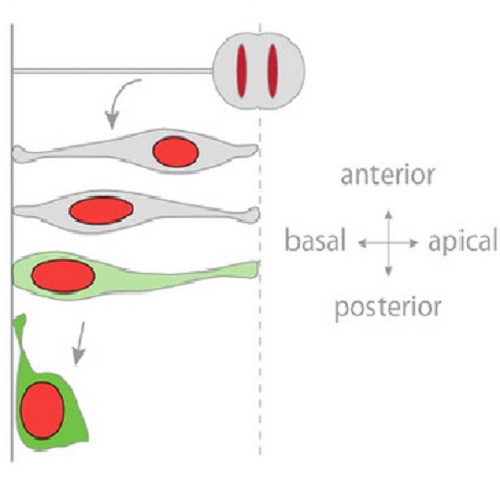Defective neuroepithelial cell cohesion affects tangential branchiomotor neuron migration in the zebrafish neural tube.
Facial branchiomotor neurons (FBMNs) in zebrafish and mouse embryonic hindbrain undergo a characteristic tangential migration from rhombomere (r) 4, where they are born, to r6/7. Cohesion among neuroepithelial cells (NCs) has been suggested to function in FBMN migration by inhibiting FBMNs positioned in the basal neuroepithelium such that they move apically between NCs towards the midline of the neuroepithelium instead of tangentially along the basal side of the neuroepithelium towards r6/7. However, direct experimental evaluation of this hypothesis is still lacking. Here, we have used a combination of biophysical cell adhesion measurements and high-resolution time-lapse microscopy to determine the role of NC cohesion in FBMN migration. We show that reducing NC cohesion by interfering with Cadherin 2 (Cdh2) activity results in FBMNs positioned at the basal side of the neuroepithelium moving apically towards the neural tube midline instead of tangentially towards r6/7. In embryos with strongly reduced NC cohesion, ectopic apical FBMN movement frequently results in fusion of the bilateral FBMN clusters over the apical midline of the neural tube. By contrast, reducing cohesion among FBMNs by interfering with Contactin 2 (Cntn2) expression in these cells has little effect on apical FBMN movement, but reduces the fusion of the bilateral FBMN clusters in embryos with strongly diminished NC cohesion. These data provide direct experimental evidence that NC cohesion functions in tangential FBMN migration by restricting their apical movement.

- Development 2011 Nov 28;138(21):4673-83
- 2011
- Developmental Biology
- 21965614
- PubMed
Enabled by:
